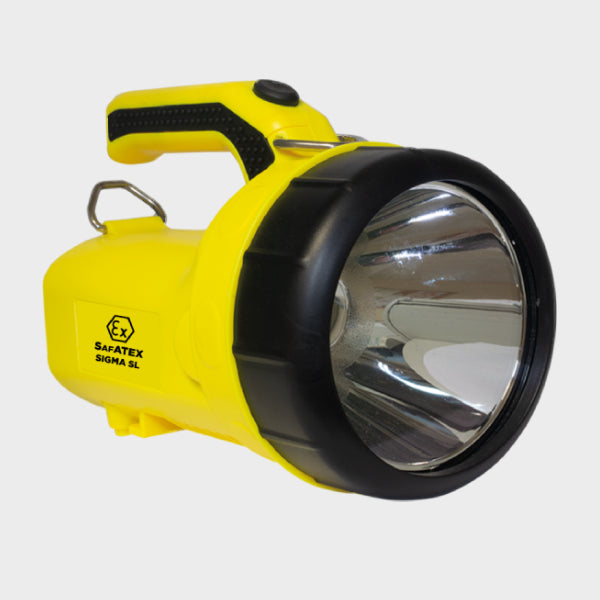Navigating the Volatile World of Industrial Safety
In the realm of industrial safety, one parameter stands tall as a guardian against catastrophic events: Max Explosion Pressure (Pmax). This critical measurement is the cornerstone of designing robust safety systems in environments where combustible materials are present. But what exactly is Pmax, and why does it matter to you?
Imagine a world where the difference between safety and disaster is measured in mere fractions of a second and pounds per square inch. That's the world of Pmax – a world where understanding and controlling explosive forces can mean the difference between a normal day at work and a headline-making incident.
As we delve into the intricacies of Max Explosion Pressure, we'll explore how this vital concept shapes the design of everything from explosion-proof equipment to ATEX lighting. Join us on a journey through the science, applications, and cutting-edge technologies that keep industries safe in the face of explosive potential.
Pmax Essentials: Your Guide to Max Explosion Pressure
Understanding Max Explosion Pressure (Pmax) is crucial for anyone working in potentially explosive environments. Let's break it down into easy-to-digest pieces.
📌 What is Pmax?
Pmax is the highest pressure reached during an explosion of a combustible substance (dust, gas, or vapor) in a closed vessel under specific test conditions. Think of it as the "worst-case scenario" pressure in an explosion.
🔍 How is Pmax Measured?
- Controlled explosions in special vessels (usually 1m³ or 20-liter spheres)
- High-tech pressure sensors record the pressure changes
- Sometimes, high-speed cameras or lasers are used to visualize the explosion
🌡️ What Affects Pmax?
Several factors can influence Pmax readings:
- Particle size (for dust explosions)
- How turbulent the mixture is
- Starting pressure and temperature
- Amount of oxygen present
- Moisture in the air or substance
🛠️ Why Pmax Matters
Knowing Pmax is essential for:
- Designing safe venting systems
- Making sure equipment can withstand potential explosions
- Creating effective suppression systems
- Assessing risks in hazardous areas
- Properly classifying explosive atmospheres
🔐 Pmax in Action: Safety Equipment
Pmax knowledge helps create crucial safety gear like:
- ATEX cameras for safely monitoring dangerous areas
- Explosion-proof lighting that won't trigger explosions
- Other explosion-proof tools for various tasks in hazardous environments
💡 Quick Tip
Remember: Equipment in potentially explosive areas should always be rated to handle pressures higher than the Pmax of that environment. It's like choosing a container that can hold more water than you ever plan to put in it – better safe than sorry!
By understanding and applying Pmax principles, you're not just working with numbers – you're actively contributing to a safer work environment for yourself and your colleagues. Keep this knowledge in mind as you navigate hazardous areas, and always prioritize safety in your operations.
Pmax Safety: Essential Explosion-Proof Products
Understanding Max Explosion Pressure (Pmax) is crucial for ensuring safety in hazardous environments. Pmax represents the highest pressure achieved during an explosion under specific conditions, and it's a critical factor in designing and selecting equipment for potentially explosive atmospheres.
The following table showcases a range of explosion-proof products specifically designed to operate safely in high Pmax environments. These products are engineered to withstand the extreme pressures that can occur during an explosion, helping to prevent catastrophic failures and protect both personnel and facilities.
From monitoring equipment like ATEX cameras and thermal imagers to communication devices and essential tools like flashlights and keyboards, each product plays a vital role in maintaining safety where explosion risks are present. By utilizing these Pmax-rated products, industries can significantly reduce risks associated with explosive atmospheres while ensuring operational continuity.
| Product Name | Product Image | Importance for Pmax Safety |
|---|---|---|
| Armadex ATEX Camera |  |
Ensures safe monitoring in high-pressure explosive environments, designed to withstand Pmax in Zone 1 & 2 hazardous areas. |
| ATEX Hazardous Substances Container |  |
Prevents release of substances that could lead to explosive conditions, crucial for containing materials that could contribute to high Pmax. |
| FLIR CX5 Thermal Imaging Camera |  |
Allows temperature monitoring to prevent conditions leading to explosions, certified for use in environments with potential for high Pmax. |
| ATEX Wi-Fi Antenna |  |
Enables communication in areas where Pmax is a critical factor, constructed to maintain integrity under high explosion pressures. |
| Ecom Smart-Ex 02 DZ1 |  |
Allows safe mobile communication where explosion risks are highest, designed for Zone 1 hazardous areas with high Pmax potential. |
| NightSearcher SAFATEX SL |  |
Provides illumination in high-risk explosive environments, resistant to high pressures like those associated with high Pmax conditions. |
Each product listed above plays a crucial role in maintaining safety where high Pmax levels pose risks. By choosing equipment designed to withstand these pressures, industries can enhance safety protocols and protect personnel and facilities from the devastating consequences of explosions.
For more information on our range of explosion-proof products and how they can enhance safety in high Pmax environments, visit Specifex.com today.
Conclusion
Max Explosion Pressure (Pmax) is more than just a number – it's a critical factor in designing and selecting equipment for hazardous environments. By understanding Pmax and choosing products designed to withstand high explosion pressures, industries can enhance safety measures and protect against catastrophic events. Whether it's through explosion-proof cameras, lighting, or communication devices, each product plays a vital role in maintaining safety where Pmax risks are present.
For industries operating in potentially explosive atmospheres, prioritizing Pmax safety isn't just a recommendation – it's a necessity. By investing in the right equipment and staying informed about Pmax principles, organizations can mitigate risks and create safer working environments for everyone involved.
Explore our range of Pmax-rated products at Specifex.com and discover how we can help you enhance safety in high-pressure explosive environments.

